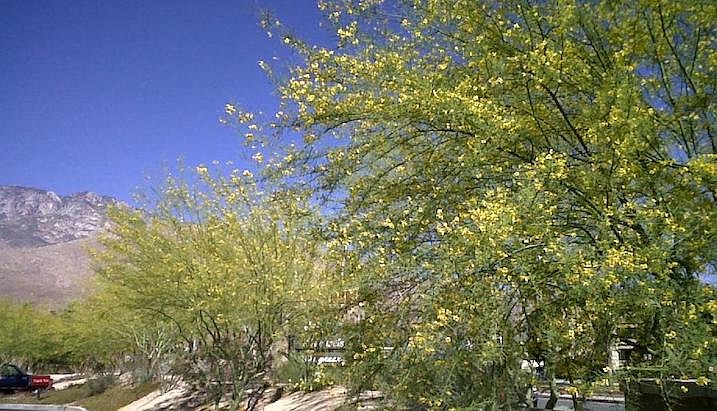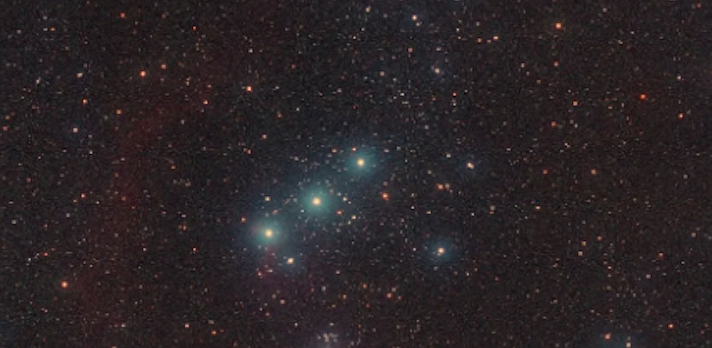 Facebook
Facebook
 X
X
 Instagram
Instagram
 TikTok
TikTok
 Youtube
Youtube

Highest Monthly Rainfall Totals in San Diego are most likely to occur in January and February (about 1.9 inches each on average) according to weather-service statistics. If low temperatures accompany the typical Pacific storms of this period, there’s a chance of snow in the mountains, including a very slim chance of snowfall as far west as the coast. Only during the months of December and January have traces of snow ever been recorded at San Diego’s National Weather Service station.

Acacias, festooned with myriads of fluffy yellow blossoms, are brightening streetsides, freeway embankments, and backyard gardens throughout the San Diego area this month. Although many acacias are native to subtropical regions, nearly all we see today in San Diego were introduced from Australia. Anza-Borrego’s native acacia (A. greggii) is the notoriously thorny “catclaw,” known by early desert pioneers as “tearblanket” and “wait-a-minute bush.”

The Glittery, Bright “Winter Constellations” of Orion, Taurus, Auriga, Gemini, Canis Major, and Canis Minor are best seen during early evening hours in January and February. The bright winter constellations happen to include about one-third of the most luminous stars appearing in the night sky. The brightest star of all, Sirius, lies in the constellation of Canis Major. Sirius appears as a scintillating, bluish point of light high over the southeast or south horizon in early evening. The second-brightest star of the night sky, Canopus, can be seen hovering very low over the south horizon whenever Sirius is nearing its highest altitude (about 40 degrees) in the southern sky. For late January this happens around 10pm, and for early February it occurs around 9pm.
The above comes from the Outdoors listings in the Reader compiled by Jerry Schad, author of Afoot & Afield in San Diego County. Schad died in 2011. Planet information from SkyandTelescope.org.


Highest Monthly Rainfall Totals in San Diego are most likely to occur in January and February (about 1.9 inches each on average) according to weather-service statistics. If low temperatures accompany the typical Pacific storms of this period, there’s a chance of snow in the mountains, including a very slim chance of snowfall as far west as the coast. Only during the months of December and January have traces of snow ever been recorded at San Diego’s National Weather Service station.

Acacias, festooned with myriads of fluffy yellow blossoms, are brightening streetsides, freeway embankments, and backyard gardens throughout the San Diego area this month. Although many acacias are native to subtropical regions, nearly all we see today in San Diego were introduced from Australia. Anza-Borrego’s native acacia (A. greggii) is the notoriously thorny “catclaw,” known by early desert pioneers as “tearblanket” and “wait-a-minute bush.”

The Glittery, Bright “Winter Constellations” of Orion, Taurus, Auriga, Gemini, Canis Major, and Canis Minor are best seen during early evening hours in January and February. The bright winter constellations happen to include about one-third of the most luminous stars appearing in the night sky. The brightest star of all, Sirius, lies in the constellation of Canis Major. Sirius appears as a scintillating, bluish point of light high over the southeast or south horizon in early evening. The second-brightest star of the night sky, Canopus, can be seen hovering very low over the south horizon whenever Sirius is nearing its highest altitude (about 40 degrees) in the southern sky. For late January this happens around 10pm, and for early February it occurs around 9pm.
The above comes from the Outdoors listings in the Reader compiled by Jerry Schad, author of Afoot & Afield in San Diego County. Schad died in 2011. Planet information from SkyandTelescope.org.
Comments